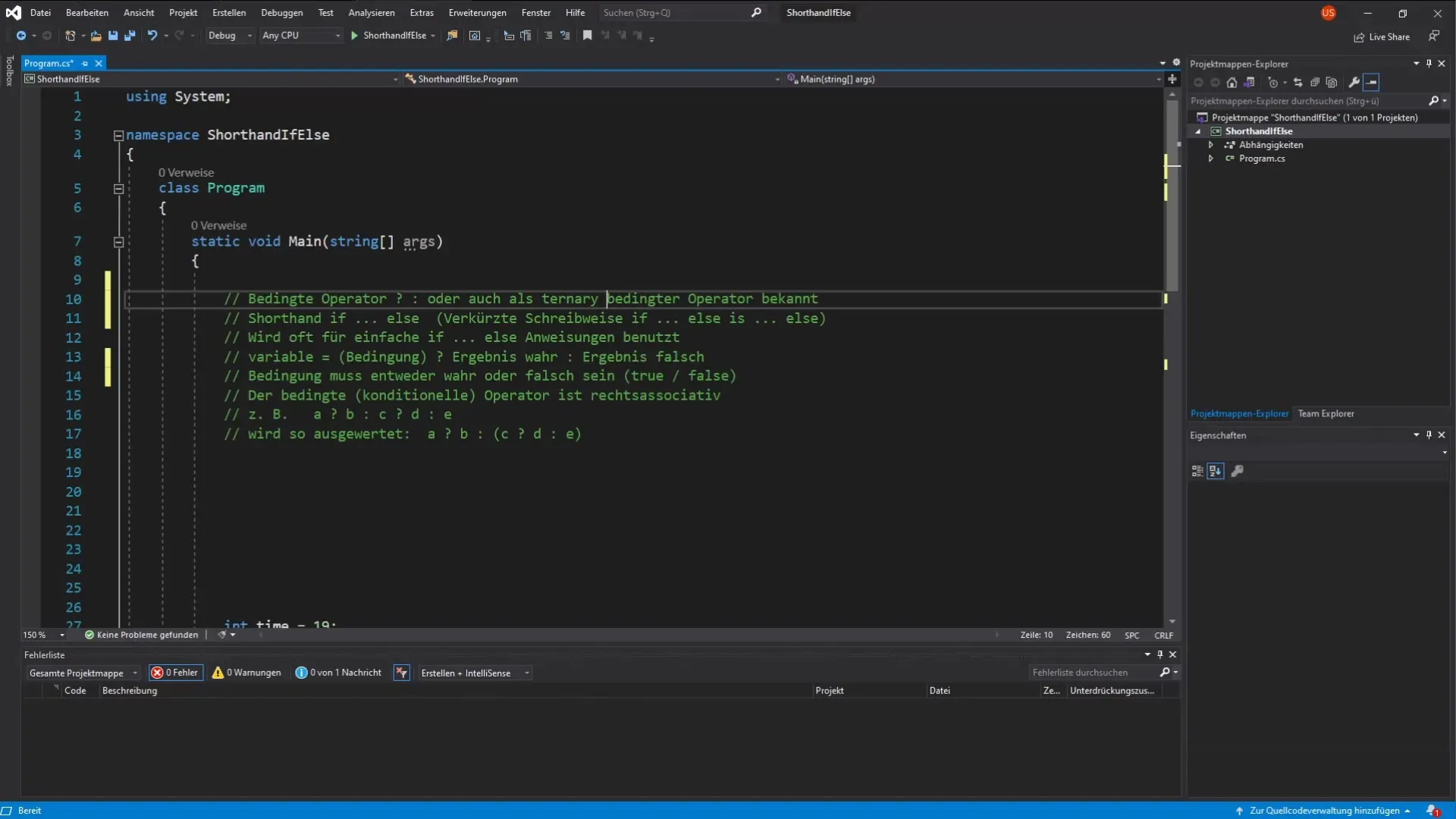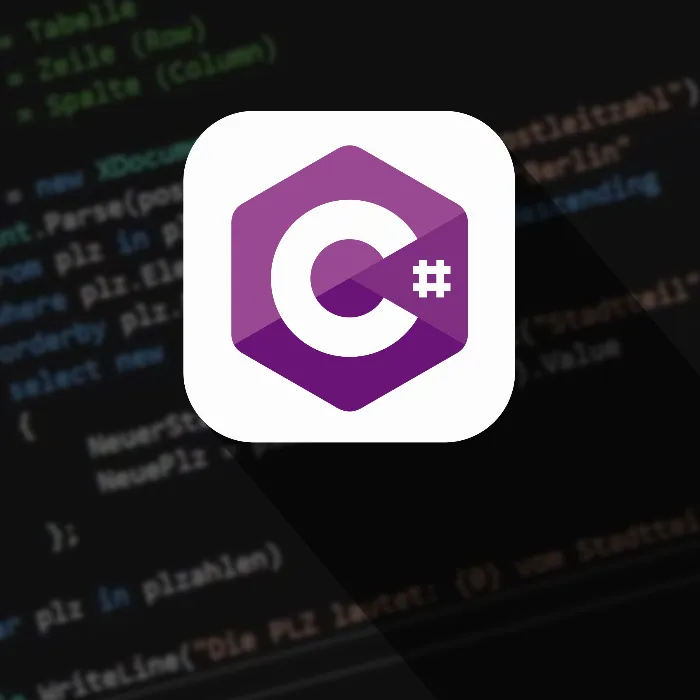Programming with C# offers many options for making decisions in your code. One of the most effective methods is the use of the ternary operator, also known as shorthand if, else if, else. This notation can save you a lot of time and space by condensing multiple conditions into a single line. In this guide, you will learn how to use the ternary operator in your daily programming tasks.
Key Insights
- The ternary operator shortens the syntax of if-else conditions.
- It is used in the form condition? true: false.
- The operator is particularly useful for simple, single-line conditions.
Step-by-Step Guide
To understand the benefits of the ternary operator, start with the basic if-else structure, and we will show you how to convert this into compact, readable code.

Let's begin with a classic if-else statement. Imagine you have a time variable that represents the current time. Based on this time, you want to decide the user's greeting. If it is 6 PM or earlier, "Good day" should be output; otherwise, "Good evening".
This rephrasing already shows how much space we need for the simple IF condition. To simplify this, we will use the ternary operator.
The ternary operator has the form condition? expression1: expression2. In your case, we would simply transform the previous if-else statement into this form. A possible implementation would look like this:
What you can see here is a clear and concise notation. The code checks if the time is less than or equal to 18 and assigns the correct greeting to the variable based on this condition.
Now extend your example to add additional time conditions. Imagine you also want to output "Good morning" if the time is less than or equal to 11 AM. In this case, we now need another condition.
To condense this further, you can also chain the conditions together with a ternary operator. You can turn each part of the condition into a new ternary operator:
In this new variant, the code first checks if the time is less than or equal to 11. If this is the case, "Good morning" is output. Otherwise, it will check the second condition: is the time less than or equal to 18? If yes, "Good day" follows. In all other cases, "Good evening" is displayed.
With this, you can query multiple conditions in just one line and work easily with the ternary operator. This compact notation is not only innovative but also greatly improves the readability of your code, especially for short and concise inquiries.
The more you work with the ternary operator, the more you will recognize its advantages. You can use it in almost all situations where simple conditions are present.
In this way, you can not only compress the outputs but also increase the flexibility of your code.
Summary - Made Easy: The Ternary Operator in C
The ternary operator is a valuable tool in your C# programming arsenal. It allows you to transform complex logic into simple and compact code. By using the ternary operator, you improve both the readability and efficiency of your code.
Frequently Asked Questions
How does the ternary operator work?The ternary operator has the form condition? expression1: expression2 and returns either expression1 or expression2 based on the condition.
Where is the ternary operator most commonly used in C#?It is often used in situations where simple conditions need to be checked to quickly assign values.
Are there any limitations to using the ternary operator?The ternary operator should mainly be used for simple conditions. For more complex decisions, if-else statements are often more readable.


